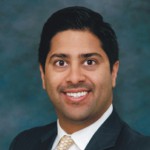In January 2019, Alison Jordan, 58, was diagnosed with breast cancer. Soon after her diagnosis, Alison received breast surgery by Rubie Sue Jackson, MD, at Anne Arundel Medical Center (AAMC).
“After my first lumpectomy with Dr. Jackson, we went through another biopsy and found more cancer,” Alison said. “Instead of doing another lumpectomy, the treatment team recommended a mastectomy because there were cancer cells found even in areas that were not calcified.”
Alison did not want to take any chances of cancer resurfacing. Although a difficult decision, she agreed to the mastectomy but knew she would want breast reconstruction. She met with Devinder Singh, MD, chief of Plastic Surgery at AAMC and medical director of Anne Arundel Medical Group (AAMG) Plastic Surgery, who walked her through her options.
“One option was to get a silicone implant, but the thought of a foreign object in my body didn’t resonate with me,” Alison said. “Another option was a procedure using my own tissue. That’s what I chose.” The procedure is known as Deep Inferior Epigastric Perforator (DIEP) flap.
DIEP flap
DIEP flap is a breast reconstruction procedure that uses tissue from the lower abdomen to make a new breast mound. The delicate blood vessels are re-connected under microscope. Essentially, this makes a living breast implant from skin and fat from the lower abdomen – the same tissue a plastic surgeon would discard during a tummy tuck.
AAMC is the only hospital in Anne Arundel County that offers this procedure. DIEP Flap combines breast reconstruction with a tummy tuck, making it a popular choice for breast cancer patients who get a mastectomy.
“Most patients choose an implant because it’s quick and easy,” says Dr. Singh. “But these can come with some potential problems, including possible infection and scarring around the implant. Although it is a more intense operating room experience and recovery takes longer, when patients choose their own tissue there is almost no downstream maintenance for them.”
It takes a village
The DIEP flap procedure is highly intricate, requiring the surgeons to reconnect vessels in order to make the tissue live and using tools so small they can’t be seen with the naked eye. But the effort is worth it and the results are pleasing.
Dr. Singh and his partner Tripp Holton, MD, who is also a plastic surgeon at AAMG Plastic Surgery, worked with the operating room nursing team to build a dedicated operating room and team specifically focused on microsurgical breast reconstruction. Dr. Singh and Dr. Holton know that even the most skilled microvascular surgeon can’t do this alone.
“We always have the same nurses and technicians for these cases,” said Dr. Singh about the team. “When we are in the operating room, we don’t have to ask for anything because they know our every move. Our team is like a NASCAR pit crew.”
In addition to their team-based approach, the doctors attribute their success to their use of the most innovative technologies to ensure the success of their surgeries. They use a 3D computerized tomography of the abdomen and pelvis – or CT scan of the belly – as a ‘roadmap’ that informs them of what to expect as they dissect the flap (or belly skin that will create a new breast).
The team also uses Xact, an alternative energy source technology that’s less damaging to the muscle when making cuts to access tissue, as well as SPY fluorescence imaging to better visualize microvascular blood flow. They credit such tools as the secret to their extremely high success rates.
“A really good breast reconstruction is also an aesthetic reconstruction,” says Dr. Singh. “That’s the new standard of breast reconstruction and that’s our standard. It has to look good to be good.”
Keeping patient experience at the forefront
Performing approximately 50 DIEP flaps each year, the plastic surgery team has seen a nearly 100 percent success rate due not only to medical expertise but to the program they planned from beginning to end. Even after the patient has left the operating room, the team continues to prioritize patient care and experience.
“We have an intelligent recipe that allows the patient to recover very rapidly with a high level of dignity and comfort,” said Dr. Holton. He says that instead of sending patients to the intensive care unit, patients go to a designated floor in the hospital with a dedicated team of oncology nurses.
The dream team
Alison says Dr. Jackson, and the entire care team, provided her a very unique experience. “I felt like I was at home when I was with Dr. Jackson and her team,” she said. “The icing on the cake was to have two personable and brilliant plastic surgeons that further confirmed that I was at the right place. All the staff was on it at all times. They were lovely, working with me through every step of the way. When I came to AAMC, I knew I was at the right place, in the right hands. I’m ever so grateful to have successfully gone through this at AAMC and to have this support network.”
Devinder Singh, MD, is chief of Plastic Surgery at AAMC and medical director of Anne Arundel Medical Group (AAMG) Plastic Surgery. Tripp Holton, MD, is a plastic surgeon at AAMG Plastic Surgery. 





